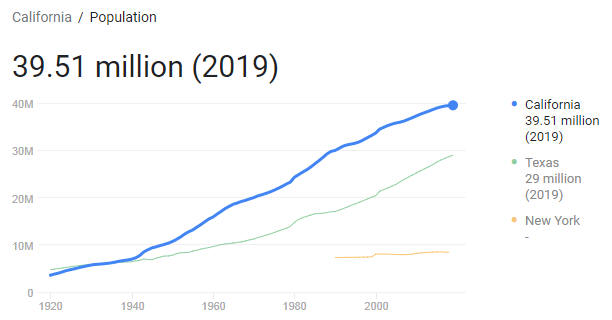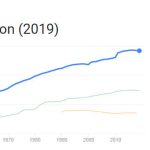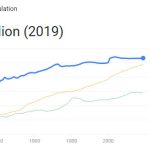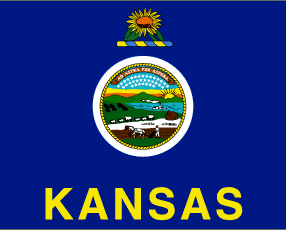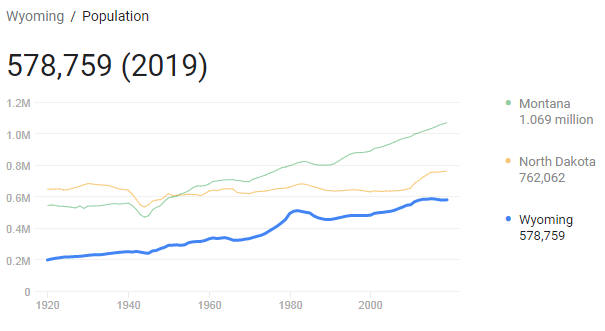California, abbreviated CA and Cal., often called Golden State, is a state of the United States. Located on the Pacific Ocean and borders Oregon in the north, Nevada and Arizona in the east, and Mexico in the south.
California has a total area of approximately 424,000 km2, and is the third largest state in the United States after Alaska and Texas. With 39,536,653 residents, California is the most populous state in the United States (US Census, 2017). California was listed as the state number 31 in the United States on September 9, 1850. The capital is Sacramento, and the largest city is Los Angeles – the second largest city in the United States after New York.
Geography
California can be divided into four natural geographic major regions: the coastal mountains, the California valley, the Sierra Nevada and the southeastern desert basin. Along the coast, a series of parallel mountain ranges (Coast Ranges) interrupted midway through San Francisco Bay, with altitudes of 500-2000 meters. Except for San Francisco Bay, the coastline is smooth, and the mountains descend steeply to the sea almost everywhere. Only a few places are a coastal plain of particular width. Numerous fault lines help to give the landscape a distinct look, and the area is strongly exposed to earthquakes. Within the coastal mountains lies the great California Valley (Central Valley), a plain filled with river deposits. Here the rivers San Joaquin run from the south and Sacramento from the north. Together they form a large delta at the outlet in San Francisco Bay. The valley is 720 km long and constitutes the foremost agricultural area in the state. To the east of the Central Valley lies the high mountain range of Sierra Nevada, a large block of earth crust that is raised and sloped at an angle, with peaks at an altitude of 3000–4000 meters, most in the eastern part of the mountain area. The highest peak is Mount Whitney, 4418 meters above sea level, the highest point in the United States (except Alaska). To the southeast of the Sierra Nevada are plateaus, and to the south the great Mojave Desert. Large areas are below sea level, the lowest being Death Valley (86 mu). The 775 km2 large Salton Sea(71 meters below sea level), formed 1905–07 due to flooding in the Colorado River.
Population
The population consists of about 40 percent white, about 38 percent Hispanics or Latinos, approx. six percent of African Americans and approximately 14 percent are of Asian descent.
Population growth has been around 64 percent since 1980 (compared with about 38 percent across the United States). The main growth is population with Latino and Hispanic backgrounds. Between 1860 and 1960, California doubled its population on average every 20 years, passing New York as the most populous state in the 1960s. Growth has subsequently slowed somewhat, but the population increased by 18.6 per cent in the period 1970-80, and in the 1980-90 by almost 26 per cent, compared with 9.8 per cent, which was the national average.
The ethnic composition is very varied. In 2010, 40 percent of residents were white, 6.2 percent African American, 14 percent Asian, and one percent Native American. 38 percent were of Hispanic (Hispanic or Latino) descent, of which 31 percent were of Mexican origin. In addition, a large number of illegal immigrants, substantially from Mexico, are estimated at 2.6 million in 2010. Of the US states, California has the largest number of Hispanic, Native Americans, Chinese, Filipinos, Japanese, Koreans and Vietnamese, and the fifth largest number of African Americans..
3 / 4 of the population is concentrated to the three major urban areas. 96 percent live in cities and urban areas, a higher proportion than in any other state. Major cities are Los Angeles (3,999,759, US Census 2017), San Diego (1,419,516), San Jose (1,035,317), San Francisco (884,363) and Fresno (527,438). The capital of Sacramento has 501,901 residents.
Business
One of California’s many vineyards. California is the state where the most fruit is grown, and the majority of the country’s wine and spirits are produced. The image is taken from the paper lexicon Store Norwegian Lexicon, published 2005-2007.
In economic terms, California is a major power, and represents more than 13 percent of US GDP. Only seven countries in the world have more GDP than California alone. The state is the United States’ leading agricultural producer thanks to a long growing season and widespread use of irrigation. 85 percent of the total agricultural area of 38.5 million acres is under irrigation. The main products are slaughter cattle, dairy products, cotton and grapes. The state produces further approximately 1 / 3 of the country’s fruits and vegetables, and has 90 percent of the wine and spirits production (see also Californian wine). Oranges, lemons, grapefruits are grown, besides peaches, apricots, plums, pears, apples, figs and dates; further artichokes, asparagus, broccoli, strawberries, lettuce, sugar beets, tomatoes and walnuts. Much of the harvesting work is done by Mexican seasonal workers. Timber production is surpassed only by Oregon’s, and California has a greater catch than any other state, except Alaska. San Diego and San Pedro (Los Angeles) provides most of the country’s canned tuna, Monterey most of the sardines.
Gold was found in 1848, but production is negligible today. Some copper, zinc, lead, mercury and silver are extracted. California is one of the three leading petroleum-producing states in the United States, with an annual production of 230 million barrels of crude oil (2009). The largest fields are Midway-Sunset, South Belridge, Kern River and Cymric, all located around Bakersfield, about 180 miles north of Los Angeles in the San Joaquin Valley.
The other major industry branches in California are the transportation and food industries. Much of the American manufacturing of airplanes, rockets and spacecraft takes place in the Los Angeles area, aviation industry also at San Francisco and San Diego. The electronics industry has expanded significantly in recent times, especially in the so-called Silicon Valley between San Francisco and San Jose. In Los Angeles and Richmond outside San Francisco, an extensive petrochemical industry has been built up. Los Angeles (Hollywood) is the center of the movie and television industry. Tourist traffic is also an important industry. California has a number of universities and other higher education institutions, the most well-known being the University of California with facilities in several places, including Berkeleyat San Francisco and Los Angeles, and Stanford University at Palo Alto at San Francisco.
California sends two senators and 53 representatives to Congress.
